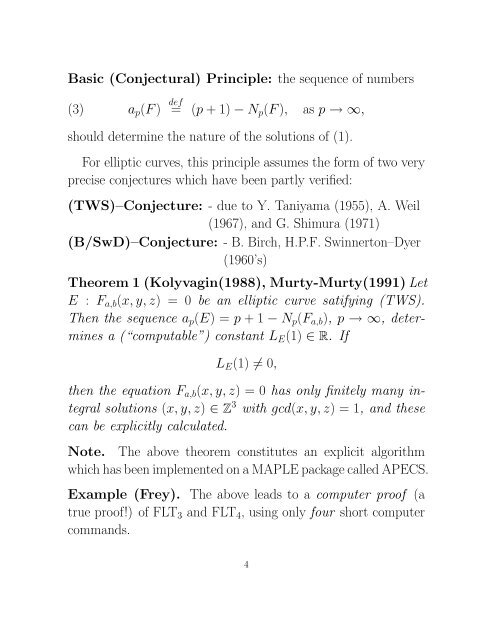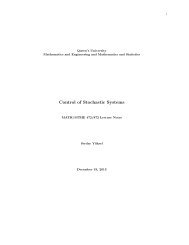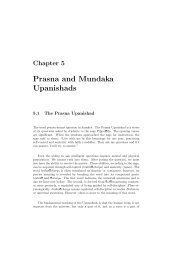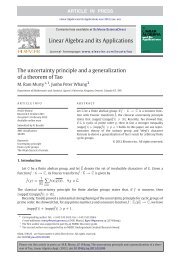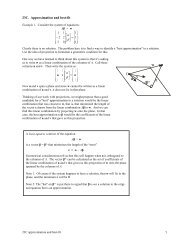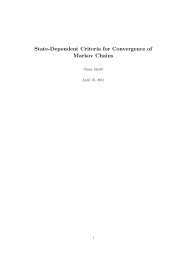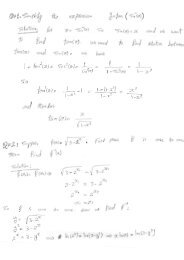Fermat's Last Theorem
Fermat's Last Theorem
Fermat's Last Theorem
Create successful ePaper yourself
Turn your PDF publications into a flip-book with our unique Google optimized e-Paper software.
Basic (Conjectural) Principle: the sequence of numbers<br />
(3)<br />
a p (F ) def<br />
= (p + 1) − N p (F ), as p → ∞,<br />
should determine the nature of the solutions of (1).<br />
For elliptic curves, this principle assumes the form of two very<br />
precise conjectures which have been partly verified:<br />
(TWS)–Conjecture: - due to Y. Taniyama (1955), A. Weil<br />
(1967), and G. Shimura (1971)<br />
(B/SwD)–Conjecture: - B. Birch, H.P.F. Swinnerton–Dyer<br />
(1960’s)<br />
<strong>Theorem</strong> 1 (Kolyvagin(1988), Murty-Murty(1991) Let<br />
E : F a,b (x, y, z) = 0 be an elliptic curve satifying (TWS).<br />
Then the sequence a p (E) = p + 1 − N p (F a,b ), p → ∞, determines<br />
a (“computable”) constant L E (1) ∈ R. If<br />
L E (1) ≠ 0,<br />
then the equation F a,b (x, y, z) = 0 has only finitely many integral<br />
solutions (x, y, z) ∈ Z 3 with gcd(x, y, z) = 1, and these<br />
can be explicitly calculated.<br />
Note. The above theorem constitutes an explicit algorithm<br />
which has been implemented on a MAPLE package called APECS.<br />
Example (Frey). The above leads to a computer proof (a<br />
true proof!) of FLT 3 and FLT 4 , using only four short computer<br />
commands.<br />
4


